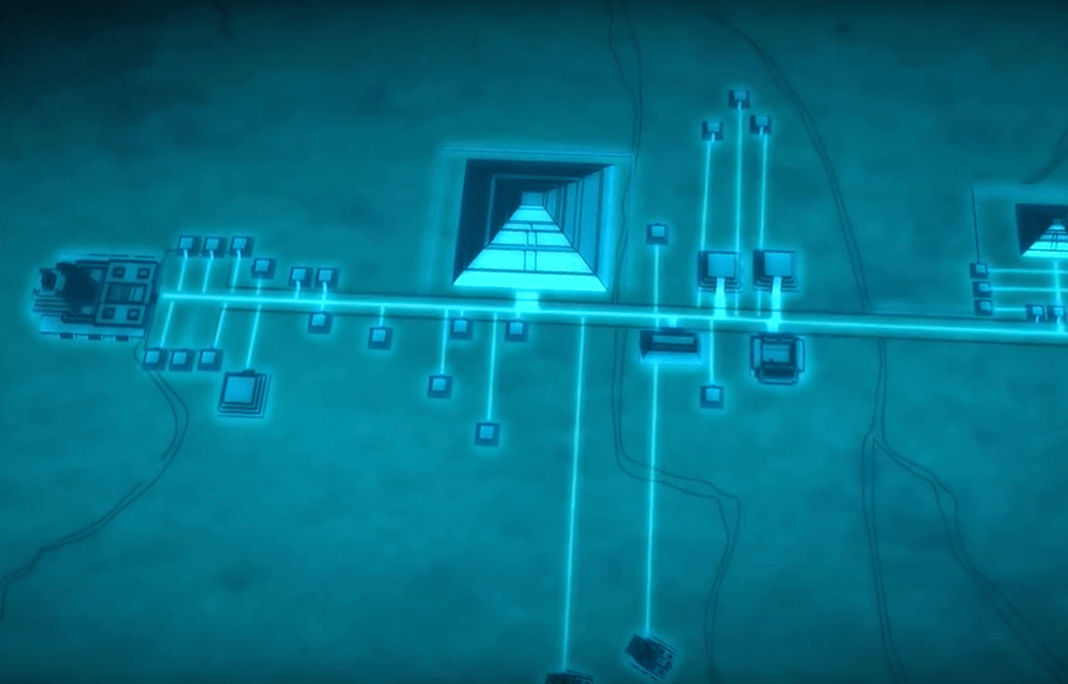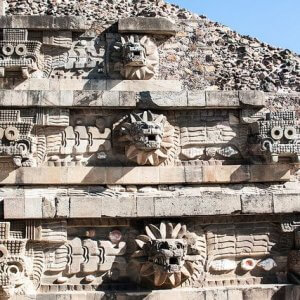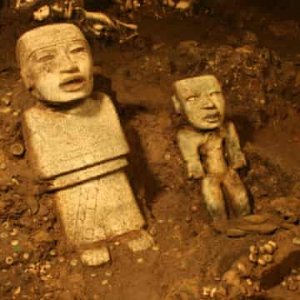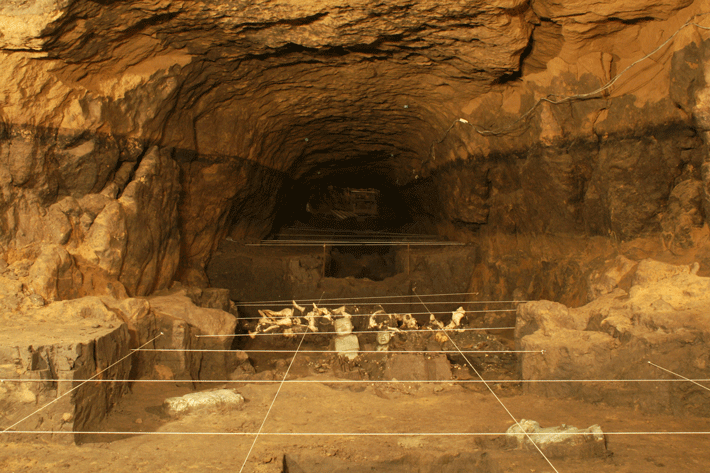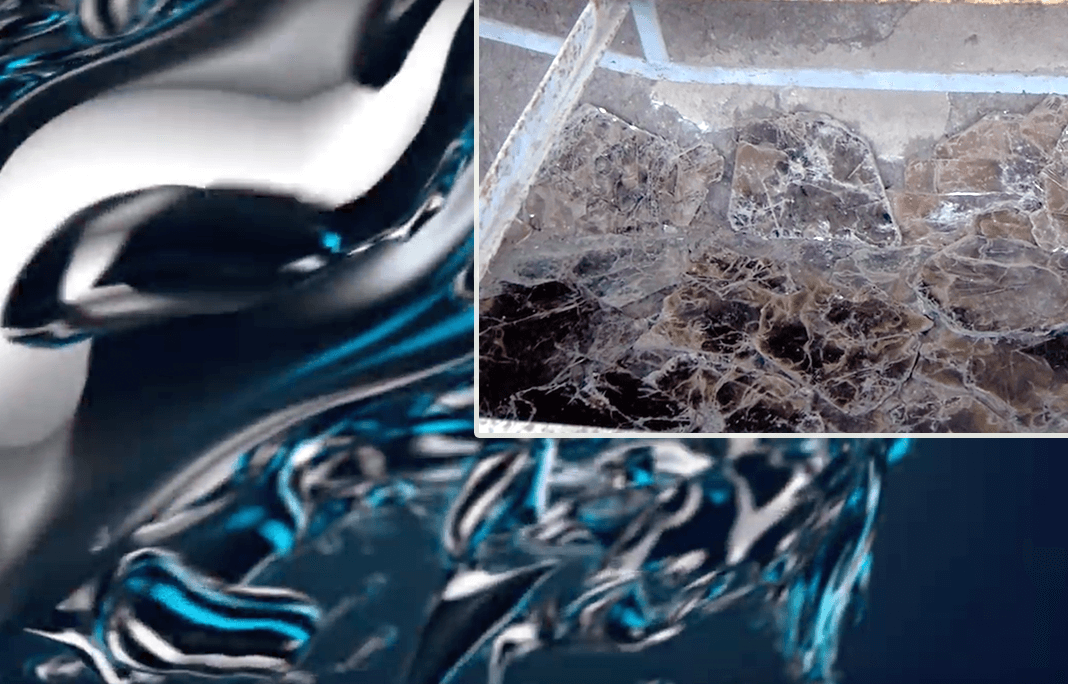
The tunnels under the pyramids are rich in mercury, mica and pyrite (part 2)
 15. 10. 2020
15. 10. 2020

Archaeologists have found a river of liquid mercury and the minerals mica and pyrite in the pre-Greek city of Teotihuacán. Proponents of the theory of archaeoastronauteches suspect that it was not only for their glittering effect used in rituals. Instead, they believe that these elements have been used as part of advanced technology that we do not yet understand. Were these ingeniously built tunnels really part of an electromagnetic power plant that drew energy from the planet's natural resonance?
Massive fire
Although the mysterious city of Teotihuacán, at one point home to 200 people, flourished, it disappeared during a huge fire that left its mark on a large area. Proponents of the theory of archeoastronauteches think that this explosion was caused by a hypothetical power plant. The fire hit a large part of the city. Academic archaeologists, however, believe that the fire was intentional during the uprising of the lower classes. The poor rose up against the local elite, causing the extinction of Teotihuacan, which the Aztecs later found abandoned. Before the "explosion" or uprising, if you will, the city flourished between 000 BC and 100 AD. However, it should be noted that his culture was brutal. Many people and animals were sacrificed during the rituals. Remains of beheaded people were found under the Temple of the Moon in 650, but also wolves, jaguars, cougars, rattlesnakes and eagles.
A city built by the stars
There are two huge buildings in the city - a 65 m high pyramid of the sun, the third largest pyramid in the world. Next is the 55 m high pyramid of the moon and the temple of Quetzalcoatla, a feathered serpent, all connected by a procession of dead. The distribution of the city, which covers 20 square kilometers, is carefully planned and experts add that it is built in accordance with the position of celestial bodies.
According to the Ancient History Encyclopedia: "The layout of the pyramids and temples is in harmony with the Sun during the June solstice and the Pleiades, suggesting that these data were important for rituals and the presence of buried sacrifices illustrate the need to satisfy various deities, especially those related to weather and fertility." This place is extremely breathtaking and one wonders how they could build it at all, all the more so because it happened in antiquity.
Secret corridors
In 2003, heavy downpours created a meter-wide hole in the Quetzalcoatla temple, and researchers have been thoroughly researching the site ever since. They discovered the entrances to a 100 m long corridor closed 2000 years ago by boulders. The tunnel was dug about 18 m below the temple. Until 2009, they used advanced radars, 3D scanning, infrared cameras and even remote-controlled robots for reconnaissance.
- The walls of the temple of Quetzalcoatla decorated with images of this deity
- These statuettes were found in tunnels under the city
Archaeologists have previously found tunnels under the Temple of the Sun, but they were looted before the arrival of archaeologists in the 90s. Despite so many finds, there is no evidence of any tombs, and therefore no evidence of who ruled the city. No matter how hard we try to find out who built this place, we just don't know yet. However, archaeologists have found a treasury with more than 100 artifacts, and they have only just begun. Examples of what they found include the following: jaguar statues, glittering jade statues, beetle wing cabinets, rubber balls used in ancient ball games, amber balls, necklaces, a pair of carved black statues, bear, bird and jaguar bones, and ancient corn vessels . Discovery also described a "six-tiered pyramid adorned with snake-like creatures."
Liquid mercury, yellow balls and mica
Later, researchers also found something unusual: mercury and pyrite were hand-inserted into the tunnel walls. They also found hundreds of mysterious yellow spheres ranging in size from 4 to 12 cm in diameter. Scientists are still groping for their purpose. The head of the archeological team, Sergio Gómez, responded in an article published by the Smithsonian Institution: “At 15 m, we stopped at a small entrance carved into the wall.
Not long before Gómez and his colleagues discovered traces of mercury in the tunnel, which Gómez believes symbolically represented water, and pyrite, which were hand-planted in the rock. In the twilight, Gómez explained, it emitted a pulsating, metallic glow. To show it, he unscrewed the nearest light bulb. Pyrite came to life as a distant galaxy. At that moment, it was possible to imagine how the tunnel builders might have felt more than a thousand years ago: 12 meters underground, they imitated the experience of standing among the stars.
The river Mercury
While traditional archaeologists note that mercury and pyrite are "known to the supernatural for the ancient inhabitants of Central America," it needs to be considered. Mercury is the oldest known superconductor, but would people in ancient times know about it? Pyrite, known as "cat gold," would give the tunnels a radiant look. However, this mineral is also used to start a fire with sparks. Although the Smithsonian Institution appeared to be diminishing the importance of the mercury finding, the Guardian later announced in 2017 that the amount of liquid mercury found was large. It was also stated that it was the first find of this substance in Mexico from an ancient site and that it could have been used to create an underground silvery river.
Archaeologists at the University of California, Berkeley, claim that the dangerous substance was found in three other parts of Central America. He believes that the very shimmer of this substance was the reason for its use, because it looked "somewhat magical" there for ritual or symbolic purposes.
"In 2014, archaeologists found three large chambers at the end of the tunnel, about 20 meters below the temple. Enthusiasm culminated in the discovery that the earth was shaped into elegant miniature landscapes depicting mountains and valleys, in which drops of mercury symbolized sacred rivers and lakes.
Annabeth Headrick, a professor at the University of Denver, likened it to scenes from Greek mythology:
"The glow and luster of liquid mercury may have been reminiscent of an underworld river, not unlike the Styx River," Headrick said.
Thermal insulators and superconductors
Archaeologists suggest that the inhabitants of Teotihuacán heated vermilion, which was used as a blood red dye. Mercury can be obtained by this process, but as we know, its handling can be deadly. In addition to mercury and pyrite, archaeologists have also found mica, which is often used in today's electronics as an excellent thermal insulator. Curiosmos writes: "Most of the mica in Teotihuacan was found and removed from the Pyramid of the Sun in the early 20th century. Because of its value, it was subsequently sold.
According to the Sacred Sites server, there was quite a lot of mica and covered the pyramid of the sun: “There are some fascinating secrets surrounding the big city and its pyramids. One of the most interesting concerns a massive, 30 cm thick layer of crushed mica, which until recently covered the entire upper part of the pyramid of the sun. This mica was mined in mines in South America long ago and transported thousands of miles, but at the beginning of the 20th century it was removed and sold for profit by the ruthless restorer of the site.
How was this huge amount of mica transported from such a distance, and for what purpose was the pyramid covered with this precious stone? One scientist suggested that mica, as a very effective conductor, could be used as part of a long-wave celestial receiver. The incoming celestial energy could be captured by the massive part of the pyramid and its structure using sacred geometry and concentrated in a serpentine cave below the pyramid. This year-round energy available to humans could be concentrated during certain periods of the solar, lunar or stellar cycle. These specific periods were recorded using astronomical observation instruments located at various locations around the geomantically focused city of Teotihuacán.
Cat gold
After watching this show, you simply have to ask yourself more questions. Was mercury just part of a ritual, chosen because it is as shiny and beautiful as cat gold? Or was it part of some ancient technology? If she was just part of a ritual, why was she so much? Why were the tunnels lined with minerals, just as the corridors of the Egyptian pyramids were lined with granite? Is it naive to think that this giant city was built with the help of aliens who had advanced technology at their disposal? Or is it foolish to think that these massive structures were built by ordinary people practicing rituals with radiant minerals and toxic elements? You will learn the rest of this story in the 7th episode of the 12th series of the Invaders of Antiquity series.
Tip from Sueneé Universe
Nikola Tesla, My Biography and My Inventions
The most prominent inventor of all time was born in 1856 in Croatia and died in 1943 in New York. To this day, he pays for a magical personality. He is credited with initiating as yet unexplained events, such as the explosion in Tunguzka during an energy transfer experiment, as well as the so-called Philadelphia experiment, in which an American battleship disappeared in space in the eyes of numerous witnesses.
What is indispensable in physics today is behind almost everything Nikola Tesla. He built hydroelectric power plants in Niagara with turbines producing alternating current, discovered principle of remotely controlled mechanismssuch as aircraft, submarines and ships. He became a pioneer wireless connection and wireless power transmissions, getting energy from the sun. He invented laser weapons and death rays.
As early as 1909, he predicted wireless data transmissions by mobile phones and mobile networks. As if he had a direct line to God, he did not invent the discoveries, he said, they were forced into his mind in the form of finished images. As a child, he "suffered" from various fantastic visions and allegedly traveled in space and time…





 6
6